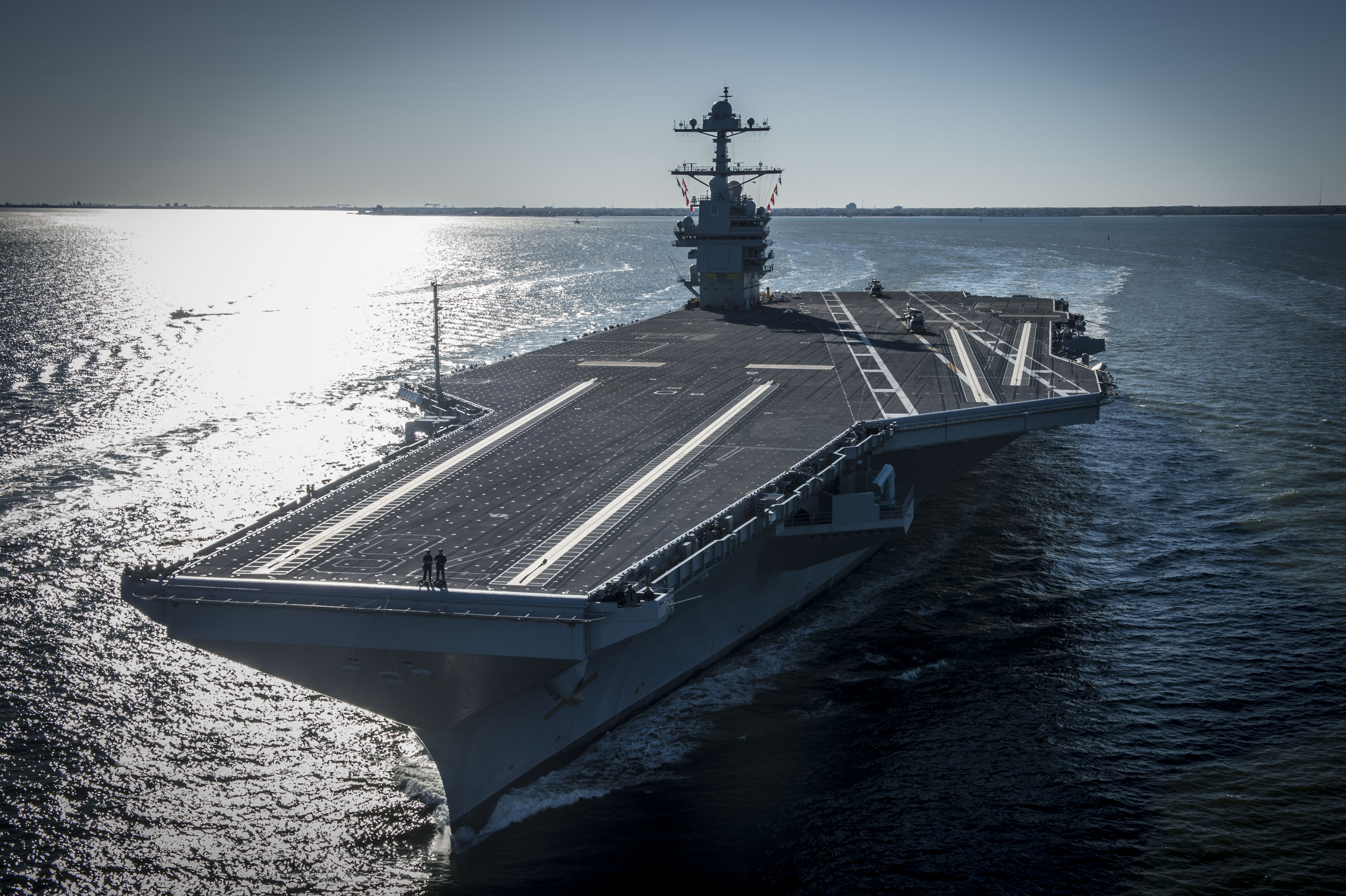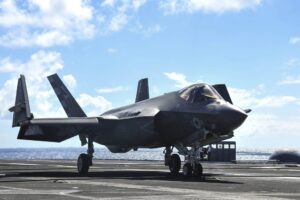Navy Inks Huge Ford Carrier Deal; Pentagon Flags Problems
Posted on

USS Gerald Ford
WASHINGTON: The Navy signed a massive, $15.2 billion contract with Huntington Ingalls Industries-Newport News Shipbuilding this evening for two more Ford-class aircraft carriers, hours after a Pentagon report listed a litany of problems with the ambitious program.
The contract pays for completion of in 2028 of the USS Enterprise, which began in 2017. It also pays for the as-yet-to-be-named CVN 81, which will be delivered in 2032.
Jennifer Boykin, president of Newport News Shipbuilding, told reporters after the stock markets closed that the block buy will lead to savings of about $4 billion over the life of the program. The company can buy all of the materials and parts at once instead of using a start-and-stop approach with hundreds of supplies across the country.
Navy Secretary Richard Spencer said in a statement that the block buy “will enable the shipbuilder flexibility to best employ its skilled workforce to design once and build twice for unprecedented labor reductions while providing stability and opportunities for further efficiencies within the nuclear industrial base.”
According to the Navy, the contract also includes modifications not found in the original agreement. It includes integration of the F-35C, an MK 38 gun system and MQ-25 Stingray drone operations. The work will save another $100 million above the $4 billion already identified, the Navy estimates.

F-35C
The Navy has struggled to keep the first ship in the class at the $12.9 billion cap, but the USS Gerald R. Ford blew past that number by $120 million last May after a series of fixes became necessary, such as replacing propulsion components damaged in a previous failure, extending the repair schedule to 12 months from the original eight, and correcting problems with the ship’s eleven Advanced Weapons Elevators.
The elevators, used to bring munitions from below deck up for installation on aircraft, are powered by magnets as opposed to cables. They were supposed to be installed by the ship’s delivery date in May 2017, but unidentified issues have delayed their completion.
The Navy told Breaking Defense earlier this month that while the eleven elevators remain “in varying levels of construction, testing and operations,” the first one was turned over to the crew in December. The plan is to complete installation and testing of the elevators before the ship’s scheduled “sail away date” in July.
Boykin said on Thursday that “we’re committed to working with the Navy though the remaining challenges,” and revealed that the second elevator should be ready “in a couple of weeks.”
The contract was announced the same day the annual Pentagon Operational test and Evaluation report was released. It raised questions about many of the carrier’s systems that critics have long flagged.
“Poor or unknown reliability of systems critical for flight operations including newly designed catapults, arresting gear, weapons elevators, and radar, could affect the ability of CVN 78 to generate sorties,” the report states. “Reliability of these critical subsystems poses the most significant risk to the [program’s] timeline.
Rep. Rob Wittman, ranking member on the House Armed Services seapower and power projection subcommittee, who was instrumental in including the block buy in the 2019 NDAA said today the work on the two carriers brings the kind of “certainty that our industrial base needs” to continue building new ships in the future.
But the whole idea of aircraft carriers steaming into battle in the coming years is being called into question.

Chinese aircraft, missile, and radar ranges over the South China Sea. (CSIS)
Earlier in the day, Todd Harrison from the Center for Strategic and International Studies, speaking on a defense budget panel, said that even with what is expected to be a $750 billion defense budget in 2020, the idea of the Navy reaching its 355-ship goal in the coming decades is “out the window” without an even larger budget. He questioned the Navy’s plans to keep 12 carriers in the fleet while buying more Ford-class flattops as an example of old-school thinking to meet new pacing threats from China and Russia.
“You’re not going up against China or Russia with carriers,” he said, which are building up their ship-killer missile capability and have focused intently on developing technologies and strategies for keeping US ships away from their waters.
Speaking at the Brookings Institution earlier this week, Adm. John Richardson, the Navy’s top officer, dismissed such concerns, insisting “there’s a great virtue in being able to move an airfield 720 miles in a day.” So, rather than “talking about the vulnerability of the carrier strike group, we should think about it as perhaps the most survivable airfield in the region.”
Subscribe to our newsletter
Promotions, new products and sales. Directly to your inbox.
